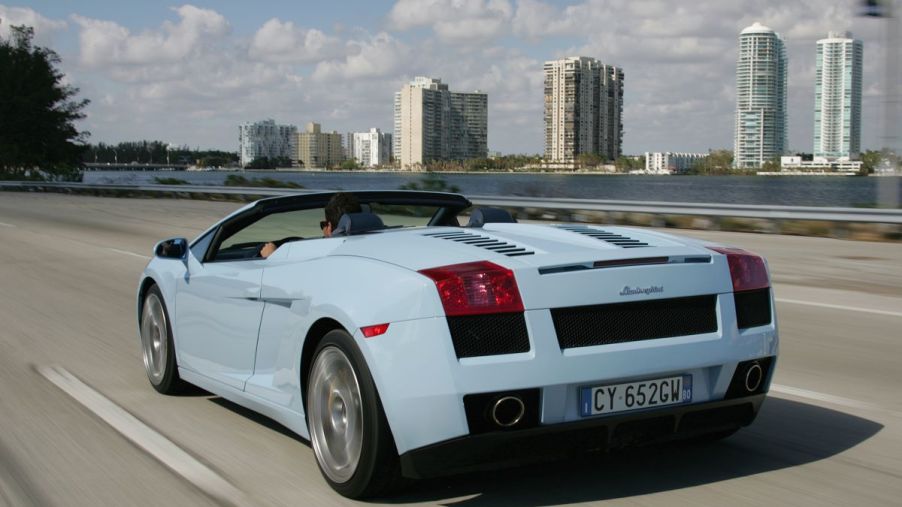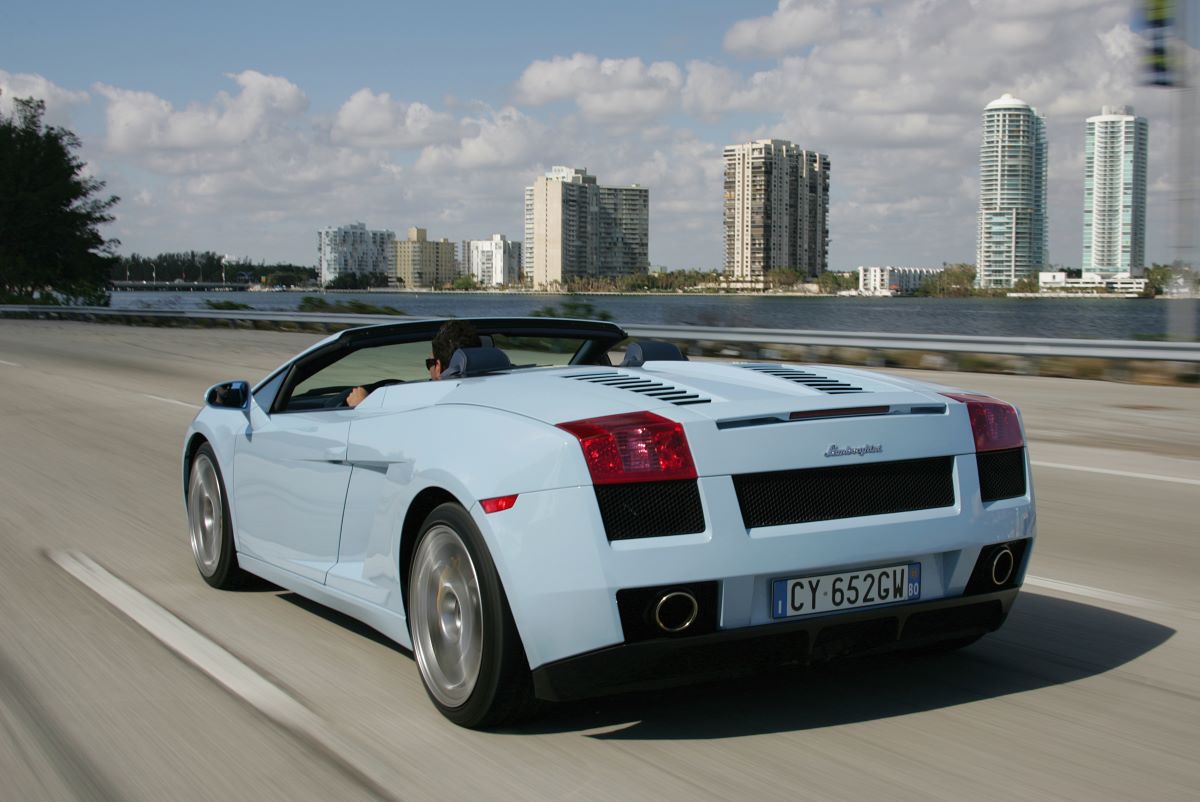
Yes, You Can Afford a Lamborghini: Here Are 3 Under $100,000
So, all those fire-spitting V12 monsters attacking tracks on TV shows have you interested, huh? All that aggression and flair wrapped in fighter jet-style body work hewn together by engineers in Bologna. Lamborghinis of any era represent the malcontent of the supercar status quo, measured in engraved keychains over six-speed gated shifters. But there has always been an issue for enthusiasts wanting to wear the brand: there’s never really been an affordable Lamborghini.
Obviously, the nature of high prices isn’t exclusive to Lamborghini but to the entire exotic car segment. Not many have half a million dollars lying around to splurge on the new Revuelto, nor any other six-figure supercar. But is there a way to weasel your way into Lamborghini ownership without bracing for an inevitable argument with your significant other? Yes, there is.
What are the cheapest Lamborghinis?
Let’s get something straight from the beginning. Unless you’re VINWiki’s Ed Bolian or the shrewdest of negotiators, owning a newer model Lamborghini on a budget is highly unlikely. Some enjoy the torturous experience of dealing with water-damaged salvage titles, but novices should steer clear. Yet, Lamborghini made plenty of impressive cars that weren’t their outrageously expensive flagship models.
When one thinks of old Lamborghinis, many think Miura—and all the zeros at the end of its auction bids. Fortunately, there are other seasoned Lambos boasting affordability, or at least as close as you can get to it.
Lamborghini Jalpa
If you’re not one of Jay Leno’s neighbors, you’ve likely never seen a Jalpa outside Rocky IV. Produced between 1981 and 1988, it served as the Countach’s baby brother. Its 3.5-liter V8 put down 255 horsepower and 225 pounds-feet of torque, and a six-second 0-to-60 mph time was possible if you could shift the five-speed fast enough. Despite only 410 units produced, the Bertone-designed, targa-top coupe is one of the most affordable Lamborghinis—at least on the auction block.
Classic.com shows a few Jalpas bought above the $100,000 mark, but these are meticulously restored originals. Mileage doesn’t seem to affect the price much as the overall condition of the car, which averages at about $90,000 for a refreshed example. Interestingly, the right-hand drive versions of the Jalpa are notably cheaper. However, for those stateside, that means taking a gamble while importing the car from Europe sight unseen.
Lamborghini Urraco
In 1972, Lamborghini released an entry-level supercar, the Urraco. Underneath its quirky body was a trio of V8s to select from, ranging from a 2.0-liter to a 3.0-liter. Designed to expand the company’s customer base, it failed through a barrage of mechanical faults. That may not be the best news for potential buyers, but some enthusiast-mechanics can make a hobby out of old Lambo repair or at least use it as a show car.
The number of Urracos made roughly doubles the Jalpa, and prices reflect that. Restored models rarely top $80,000, and the later year Urracos—1975-1979—are more abundant and less expensive. Additionally, right-hand drive variants are less than their left-hand drive counterparts, giving you room to save for the inevitable repair costs. Although it isn’t an EV, old Italian electrics mean you may have to stop and fill it up with electricity more often than gas. Just ask James May.
Lamborghini Gallardo

Ah, yes, here’s the one everyone knows. Until the Urus, the Gallardo was the best-selling Lamborghini of all time and the first entry-level supercar since the Jalpa. Even though many believe the Gallardo to be an Audi R8 in drag, there’s actually more part-sharing the other way around.
First-generation Gallardos—2003-2008—are staffed with a 5.0-liter V10 developing either 493 or 513 horsepower. The change came in a 2005 update that altered much of the car, including the engine, suspension, and gearing ratio, for the better. For the second generation—2009-2013—a replacement 552-horsepower 5.2-liter V10 was chosen, but the six-speed manual and the single-clutch six-speed auto were kept. Given the relative ubiquity of the Gallardo, it’s a lot more affordable than you may think.
There were a lot of special edition Gallardos, so ignore the six-figure Superleggera and Valentino Balboni models. Classic.com shows the average Gallardo selling for just over $100,000. However, there are ways to beat this. For instance, if you’re willing to risk a lot of mileage—35,000-50,000 miles—you can rein one in for between $70,000 and $80,000, but the convertible Spyder will cost a few thousand more. And as usual, right-hand drive models are a way to cut costs.
What’s the most affordable one?
Given its modernity, the Gallardo is undoubtedly the most affordable of the brand’s supercars. But again, it depends on what one means by affordability. With the Gallardo, there weren’t any major mechanical faults, like other old Lamborginis; therefore, it’s unlikely it’ll need an engine replacement. But a clutch replacement, most likely.
The Gallardo’s “E-gear” clutch will likely cost as much as a brand-new transmission in most passenger cars. And it needs to be replaced every 15,000 miles. That’s on top of 7,500-mile service intervals, tires, insurance, and depreciation. But if it’s street cred in the supercar world you’re looking for, its one of the best ways to get in.


